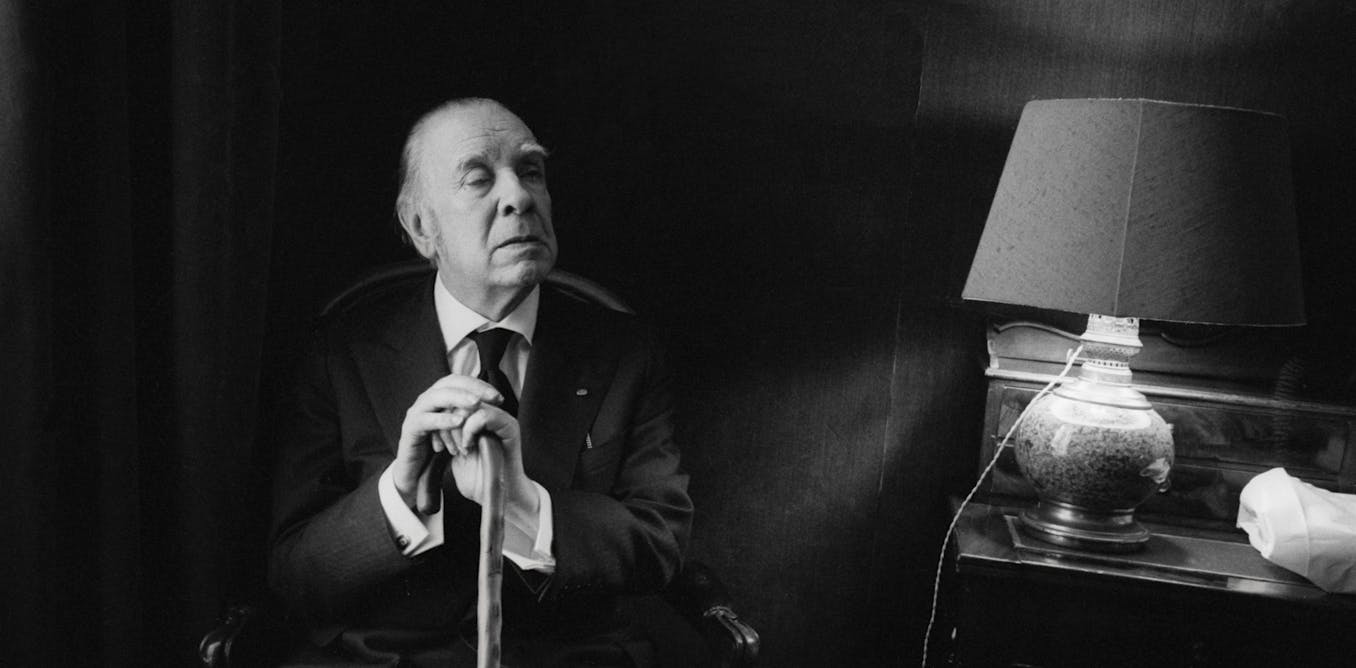Technology
What is mental imagery? Brain researchers explain the pictures in your mind and why they’re useful

Curious Kids is a series for children of all ages. If you have a question you’d like an expert to answer, send it to [email protected].
Why are some people able to visualize scenarios in their minds, with colors and details, and some people are not? – Luiza, age 14, Goiânia, Brazil
Imagine you are in a soccer match, and it’s tied. Each team will begin taking penalty kicks. The crowd is roaring, and whether or not your team wins the game depends on your ability to hit the shot. As you imagine this scene, are you able to picture the scenario with colors and details?
Scientists are hard at work trying to understand why some people can visualize these kinds of scenarios more easily than others can. Even the same person can be better or worse at picturing things in their mind at different times.
As neuroscientists in the fields of physical therapy and psychology, we think about the ways people use mental imagery. Here is what researchers do know so far.
The brain and mental imagery
Mental imagery is the ability to visualize things and scenarios in your mind, without actual physical input.
For example, when you think about your best friends, you may automatically picture their faces in your head without actually seeing them in front of you. When you daydream about an upcoming vacation, you may see yourself on the sunny beach.
People who dream about taking a penalty kick could visualize themselves like they are watching a video of it in their mind. They may even experience the smell of the turf or hear the sounds that fans would make.
Scientists believe your primary visual cortex, located in the back of your brain, is involved in internal visualization. This is the same part of the brain that processes visual information from the eyes and that lets you see the world around you.

Another brain region, located in the very front of the brain, also contributes to mental imagery. This structure, called the prefrontal cortex, is in charge of executive functions – a group of high-level mental skills that allow you to concentrate, plan, organize and reason.

Scientists have found such skills to be, at least to some extent, related to one’s mental imagery ability. If someone is good at holding and manipulating large amounts of information in mind, this person can play with things like numbers or images in their mind on the go.
Experiencing and remembering
Most of the same brain areas are active both while you’re actually experiencing an event and also when you’re visualizing it from a memory in your head. For example, when you behold the beauty of the Grand Canyon, your brain creates a memory of the image. But that memory is not simply stored in a single place in the brain. It’s created when thousands of brain cells across different parts of the brain fire together. Later, when a sound, smell or image triggers the memory, this network of brain cells fires together again, and you may picture the Grand Canyon in your head as clearly as if it were in front of you.
Benefits of mental imagery
The ability to mentally visualize can be helpful.

Notice the look of concentration on a gymnast’s face before competition. The athlete is likely visualizing themselves executing a perfect rings routine in their mind. This visualization activates the same brain regions as when they physically perform on the rings, building their confidence and priming their brain for better success.
Athletes can use visualization to help them acquire skills more quickly and with less wear and tear on their bodies. Engineers and mechanics can use visualization to help them fix or design things.
Mental visualization can also help people relearn how to move their bodies after a brain injury. However, with additional practice, those who do not use visualization will eventually catch up.
Nature-nurture interactions
All is not lost if you have difficulty visualizing. It is possible that the ability to visualize in your mind is a combined effect of both how your individual brain works and your life experiences.
For example, taxi drivers in London need to navigate very complicated streets and, scientists found, experience changes to their brain structures over the course of their careers. In particular, they develop larger hippocampuses, a brain structure related to memory. Scientists believe that the training the taxi drivers went through – having to visualize a map of complex streets across London in daily driving – made them better at mental imagery via changes in their hippocampus.
And watching someone else do a physical action activates the same brain areas as creating your own internal mental imagery. If you want to be able to do something, watching a video of someone else doing it can be just as helpful as visualizing yourself doing it in your head. So even if you struggle with mental visualization, there are still ways to reap its benefits.
Hello, curious kids! Do you have a question you’d like an expert to answer? Ask an adult to send your question to [email protected]. Please tell us your name, age and the city where you live.
And since curiosity has no age limit – adults, let us know what you’re wondering, too. We won’t be able to answer every question, but we will do our best.
-

 Technology1h ago
Technology1h agoUS pushes to break up Google, calls for Chrome sell-off in major antitrust move | The Express Tribune
-

 Technology6h ago
Technology6h agoTikTok, PTA host youth safety summit in Pakistan | The Express Tribune
-

 Technology9h ago
Technology9h agoWhy a Technocracy Fails Young People
-

 Technology23h ago
Technology23h agoJapan's $26 billion deep sea discovery sparks serious environmental concerns | The Express Tribune
-

 Technology1d ago
Technology1d agoSpaceX’s Starship advances in spaceflight despite booster landing failure | The Express Tribune
-

 Technology1d ago
Technology1d agoGreat Barrier Reef faces 'significant coral deaths' following recent climate events | The Express Tribune
-

 Technology2d ago
Technology2d agoMeta to challenge India's data-sharing restrictions between WhatsApp, other apps | The Express Tribune
-

 Technology2d ago
Technology2d agoMerlin inks £85m deal to bring Minecraft attractions to UK, US parks by 2026-2027 | The Express Tribune





















